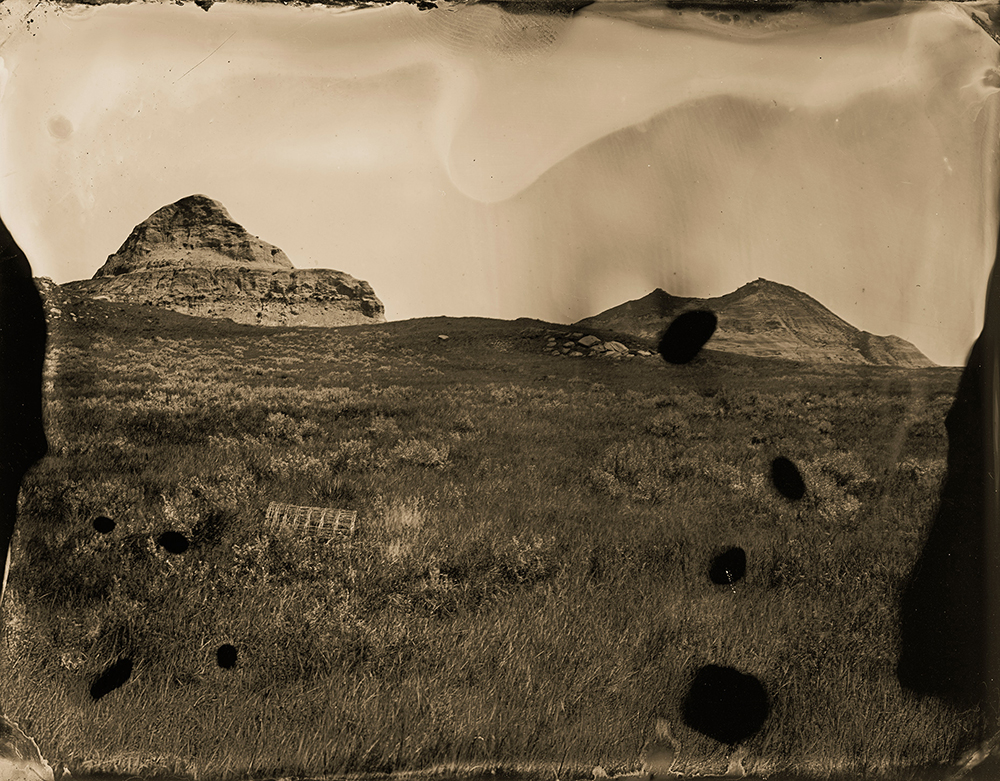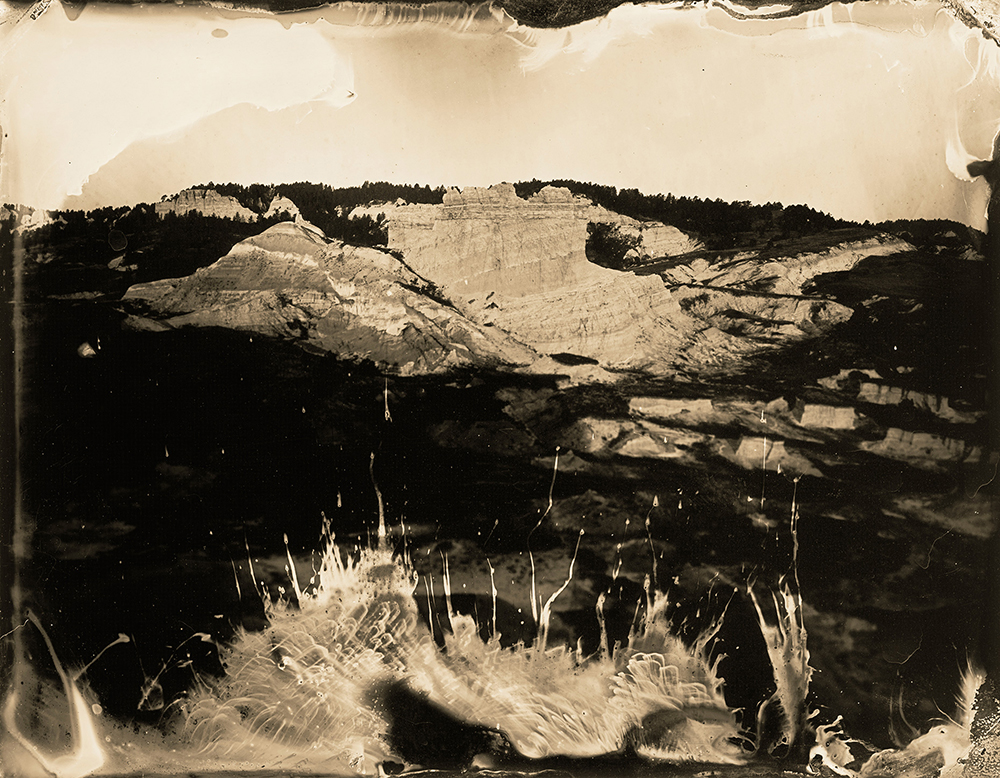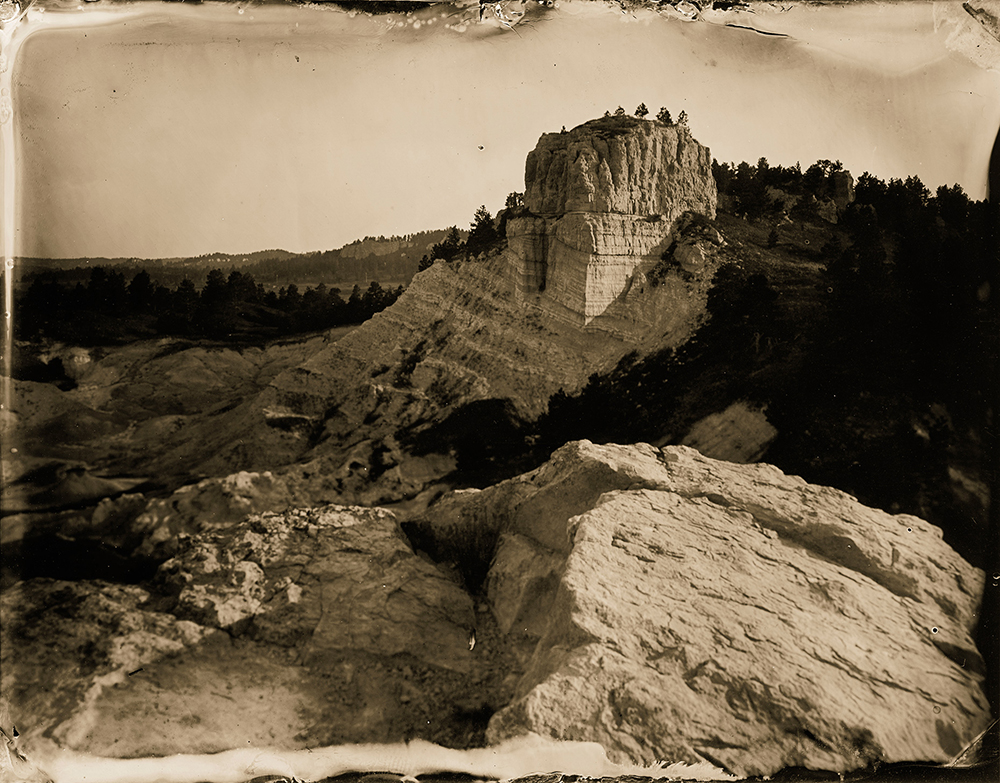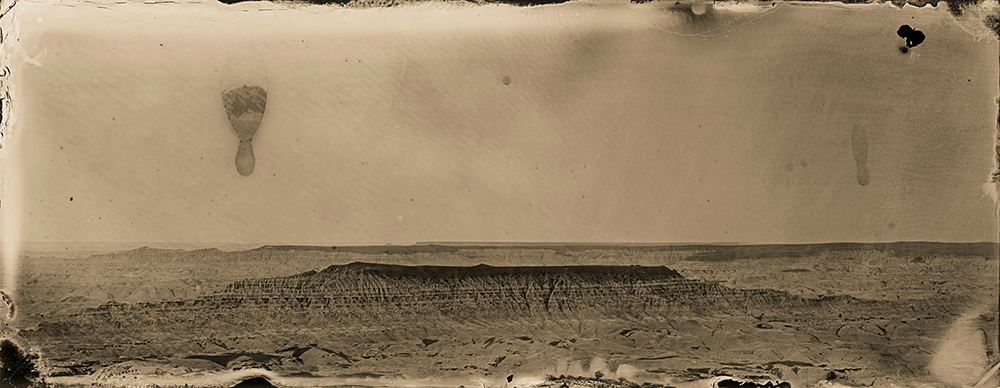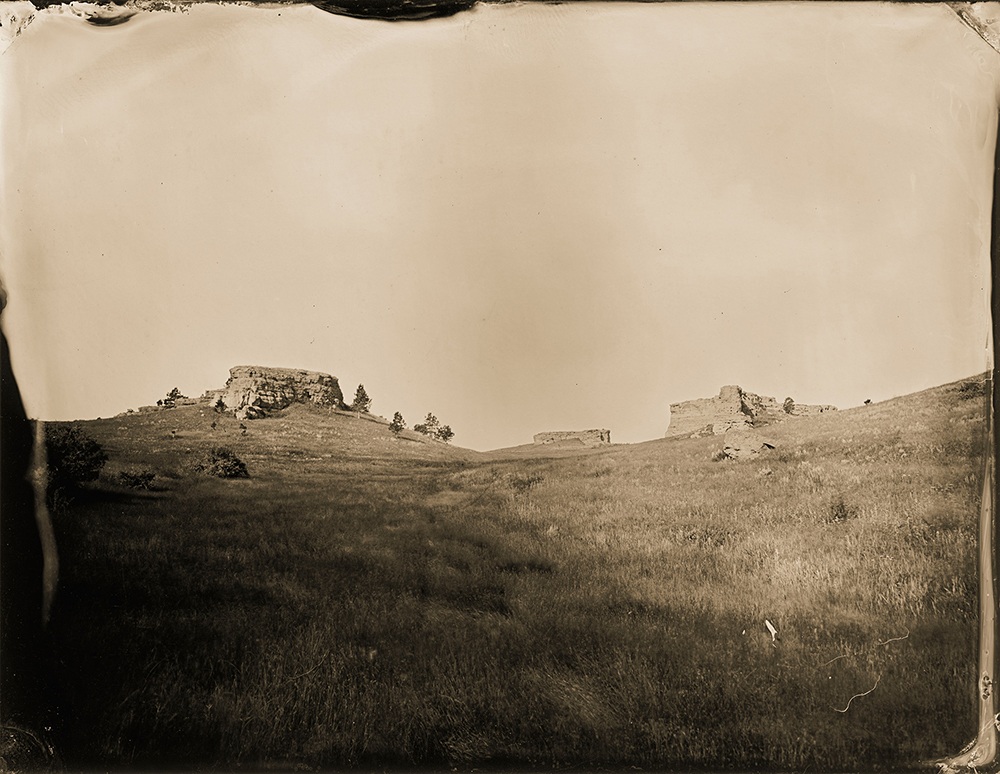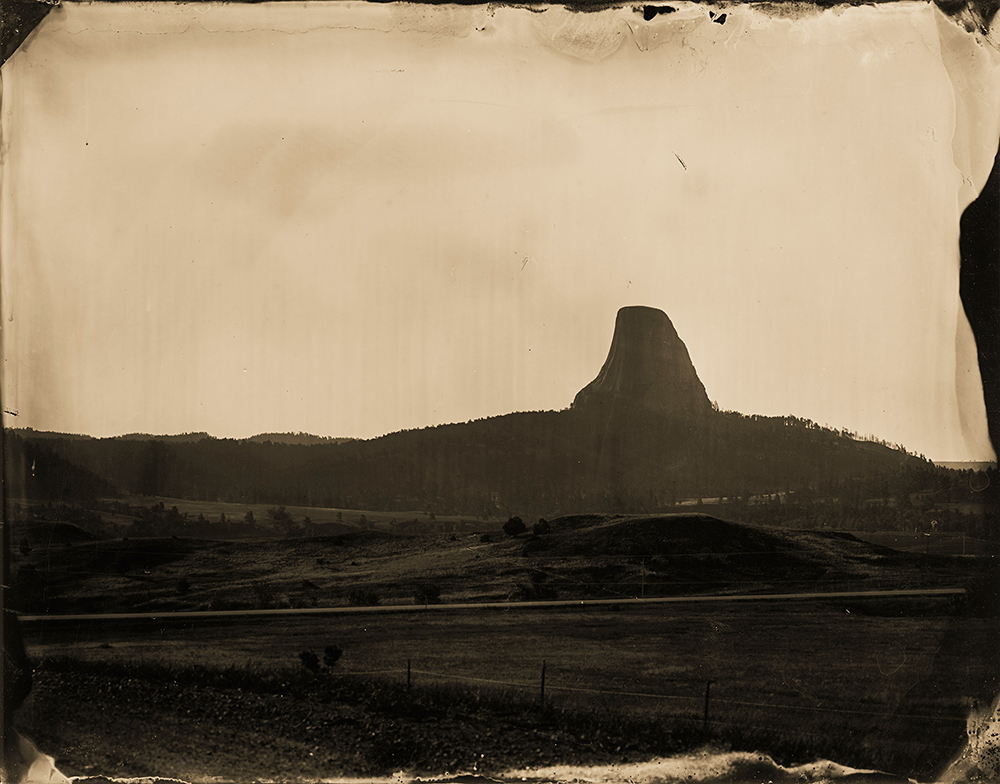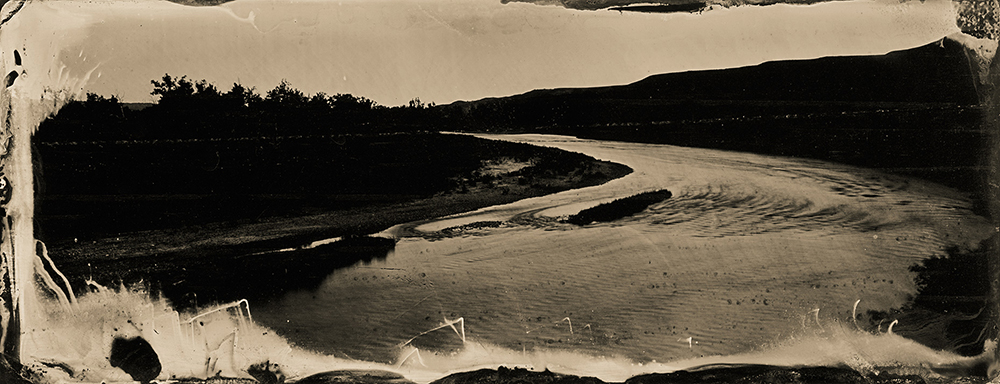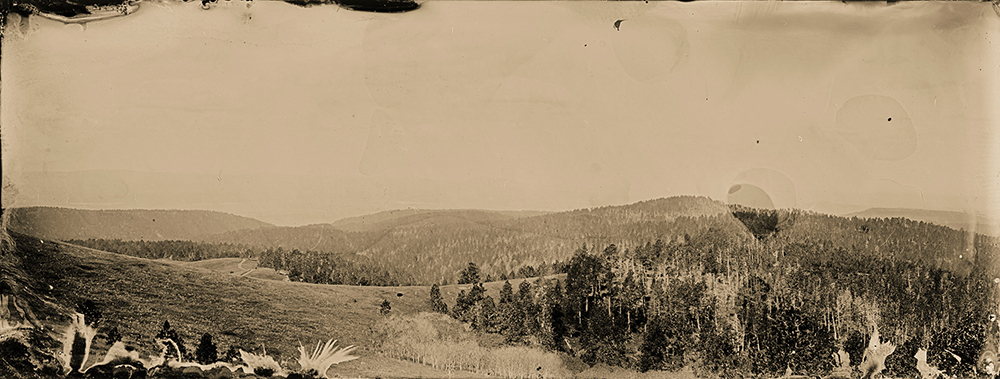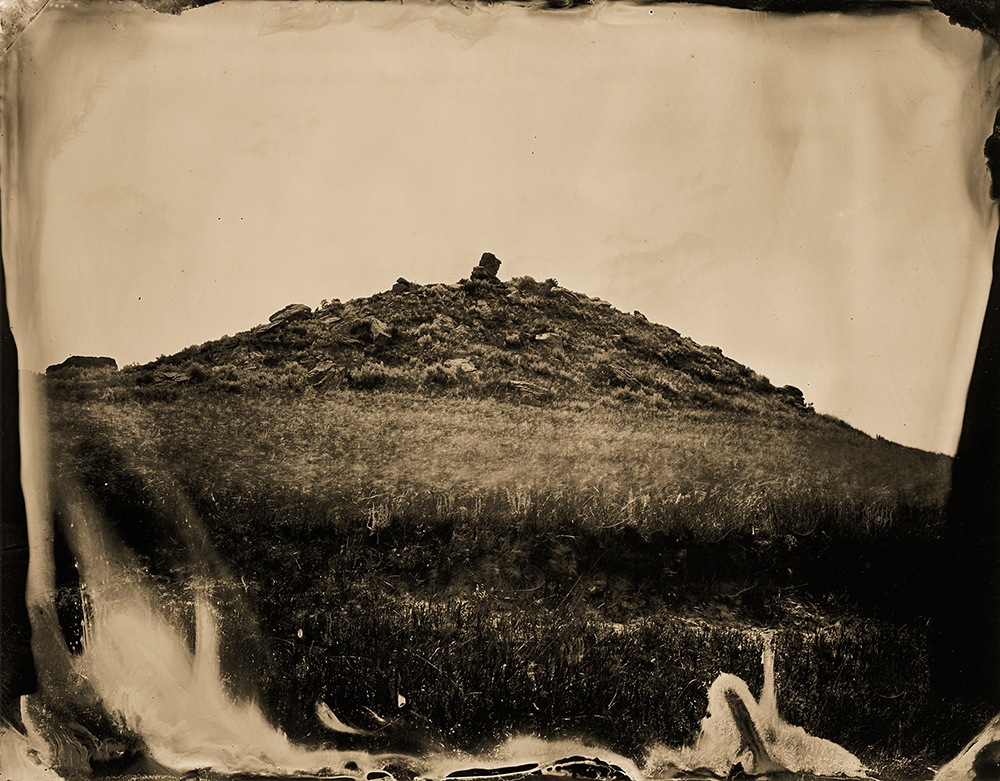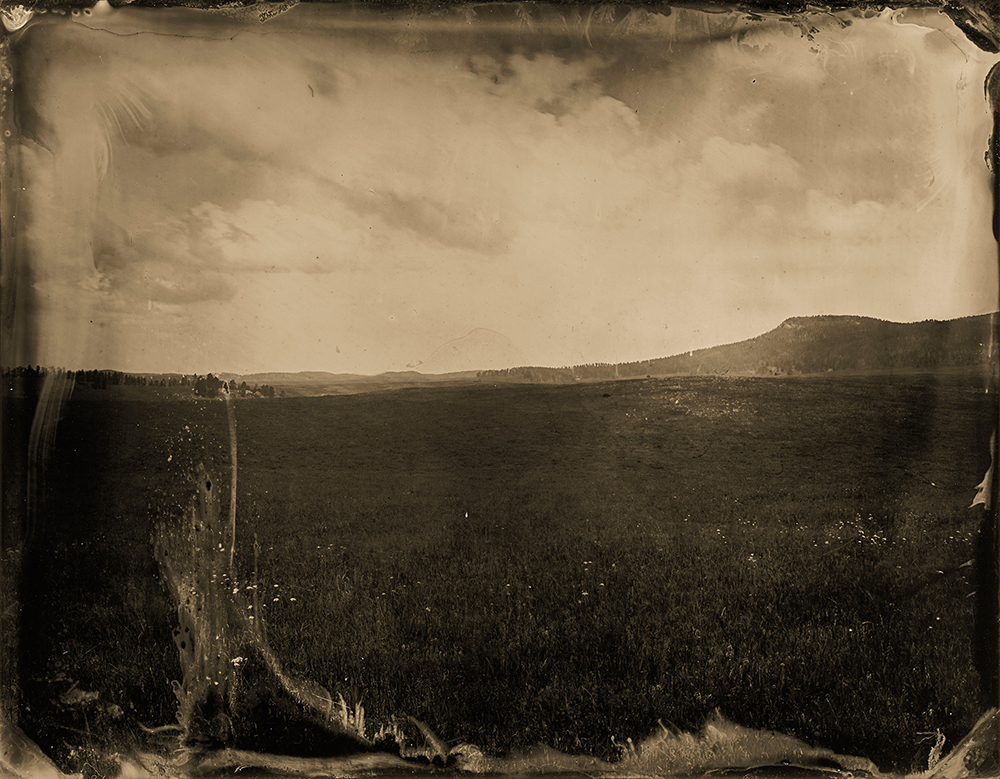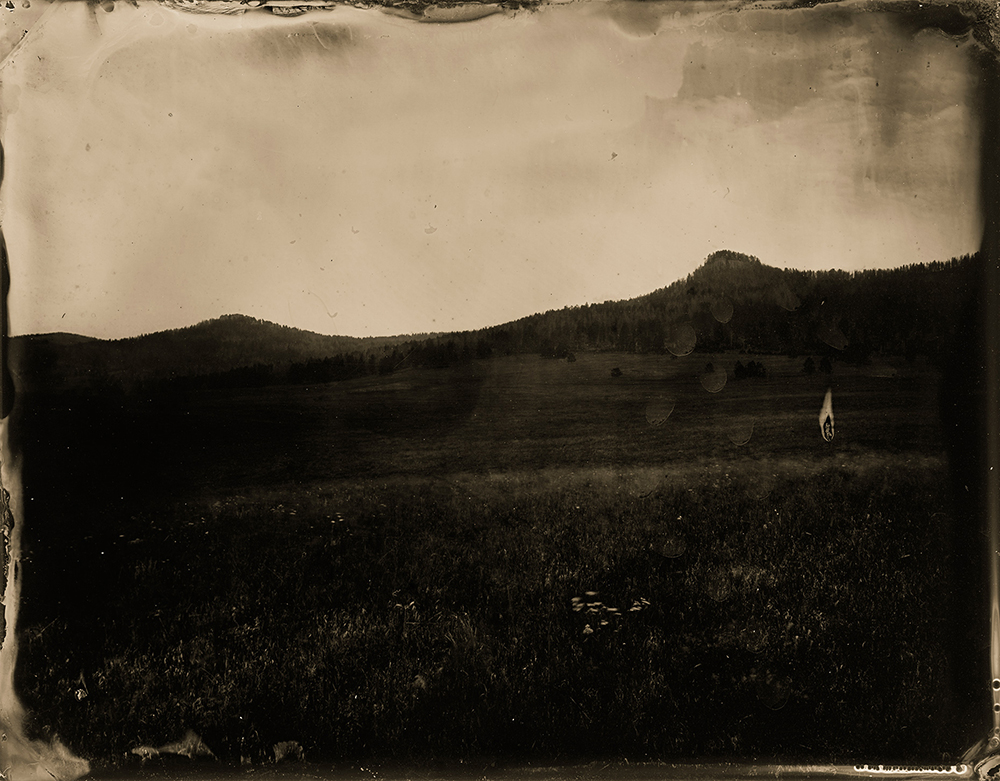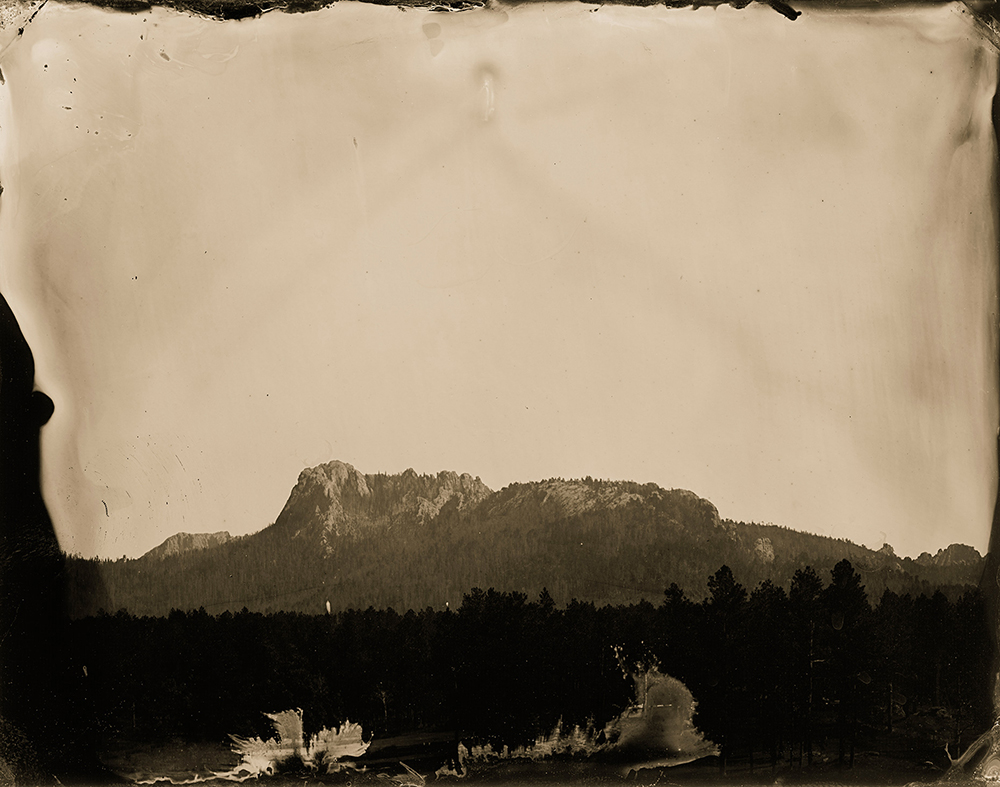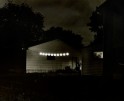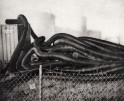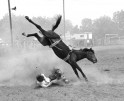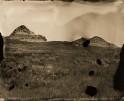Aaron C. Packard: The States Project: South Dakota
Today, I am happy to present Aaron Packard’s wet plate series of the Black Hills of South Dakota. I was immediately drawn to the images and their ‘early geological survey expedition of the West’ feel. There is nothing like a timeless photograph to trick your perception of the present tense. While photographing the Black Hills, Aaron must have psychically crossed paths with historical photographer William H. Illingworth, who photographed Custer’s Black Hills Expedition in 1874. Or, John C. Grabill, who photographed in the Black Hills between 1887 and 1892. While the modern plates evoke imagery of the past, current conditions must be a bit less harsh than the actual conditions of the 1800’s although they produce the same beautiful results. Such is the magic of wet plate. Imagine Illingworth’s four hundred pound wagon of equipment moving through the Black Hills along with the U.S. Cavalry Regiment. For now, we return to present time, and Aaron Packard’s photographs of the Black Hills of South Dakota, sans the U.S. Cavalry.
Aaron C. Packard began his career in the era of film, Polaroid, and chemistry, and moved with the industry into the digital world. He has been a working photographer in South Dakota since 2002 after being a photographer’s assistant, producer, and photographer in the commercial market of San Francisco, California for ten years. As an assistant, he learned the commercial photographic industry from some of the best and became highly sought after in the region.
Early in 2001, the dot-com bubble was bursting. Clients would appear and immediately go out of business, but Aaron persisted with some good clients. At the end of that summer, as he had for the previous five years, he joined many other creatives at the annual Burning Man Festival in Nevada. A few days after returning to reality from four weeks in the desert, Aaron awoke to confusing talk on the radio and a strange absence of constant airplane engine noise overhead; the date was September 11, 2001. The confusion of the aftermath hit the editorial and advertising markets hard for several months, and he knew that it was time for a change; it was time to head back home to South Dakota.
Being back in South Dakota made Aaron look at and attempt different directions with his work, chiefly the portrait/wedding studio business. It was not for him, but it kept things going as he developed a commercial and editorial clientele in the region. Currently, Aaron is photographing for numerous local and national clients. He incorporates an almost gonzo method of fast, minimal production problem solving in the development of world-class creative image making.
Lately, Aaron has added the adventure of obtaining his Master’s degree in Fine Arts at the University of South Dakota. He is concentrating his research toward alternative and traditional photographic methods and their applied infusion with digital techniques.
These wet plate collodion visions of the Black Hills of South Dakota originated as a commissioned series. The 1850s invention offers a great challenge in both technique and content; shaping the subject with its laborious demands upon the practitioner, causing the landscape, having its own unpredictable motion, to be frozen through time as objects blur or simply disappear into the ether. Environmental conditions from temperature, to humidity, to the particulates in the air effect the process thereby influencing the texture and artifacts within the image. All of this combined with the exciting unpredictability of the process and the limitation of only being sensitive to ultraviolet light further abstracts the image and the frame. The 150 pounds of gear, including the darkroom setup, chemistry, plates, and the 4×5 view camera, created for expletive inspiring hikes into many of the locations. All of it in a rewarding adventure and leap of faith in image making.
I know that you shoot wet plate portraits as part of your personal work. Tell me about shooting these wet plate landscape images ‘out in the field’ – getting around with your gear and processing your 4×5 wet plates. Did you have a tent or work out of the back of your vehicle?
For this project I built a 2x2x3 foot darkroom box and sewed together a giant dark-cloth that could be used out of the back of my Subaru or carried into the field. The tent idea did cross my mind but I decided it would be too much of a pain in the South Dakota winds and it turned out that a few times we were in places where there would have been no way set up a tent dark-room, once on a rock ledge and again at Devil’s Bathtub in Spearfish Canyon. We kinda strapped the whole thing on to one of our backs and put everything else into a couple of backpacks for the other two.
I love the timeless, historic ‘found photo’ feel of the images. Are you a fan of any particular historical landscape photographers?
Particular? All of them, I could just say Ansel Adams etc etc but in historic wet plate probably Alexander Gardner would be someone I would look at more. I try (try) not to let the work of others influence my aesthetic, but I see some of the most interesting contemporary wet plate images coming from Ian Ruhter.
Do you find more satisfaction from taking a labor – intensive photograph, than say, a digital photograph? Does it have more meaning for you in the end ?
Absolutely! I think you could say I was brought up with a strong craft and process ethic by my parents. My mother is a fiber artist and painter and my father a sculptor and wooden boat builder. I am much more interested, much more invested, in an image that is wrought through physical process.
I see you are currently studying for your Master’s degree in Fine Arts and that you are “concentrating on alternative and traditional photographic methods and their applied infusion with digital techniques.” How will that apply to your future personal projects?
Well, I can say yes it will and does apply to everything I do. I love tools and Photoshop is as much of a tool as a camera, a roll of film, a light, an inkjet printer, or an enlarger and it is really fun to use them all to make an image. It is the joy and adventure in taking that risk with ones work and finding the exhilaration of failure. If you are not willing to fail how can you really succeed?
Posts on Lenscratch may not be reproduced without the permission of the Lenscratch staff and the photographer.
Recommended
-
John Banasiak: The States Project: South DakotaFebruary 28th, 2016
-
Willi White: The States Project: South DakotaFebruary 27th, 2016
-
Alice Bailey: The States Project: South DakotaFebruary 26th, 2016
-
Bob Newland: The States Project: South DakotaFebruary 25th, 2016
-
Aaron C. Packard: The States Project: South DakotaFebruary 24th, 2016

